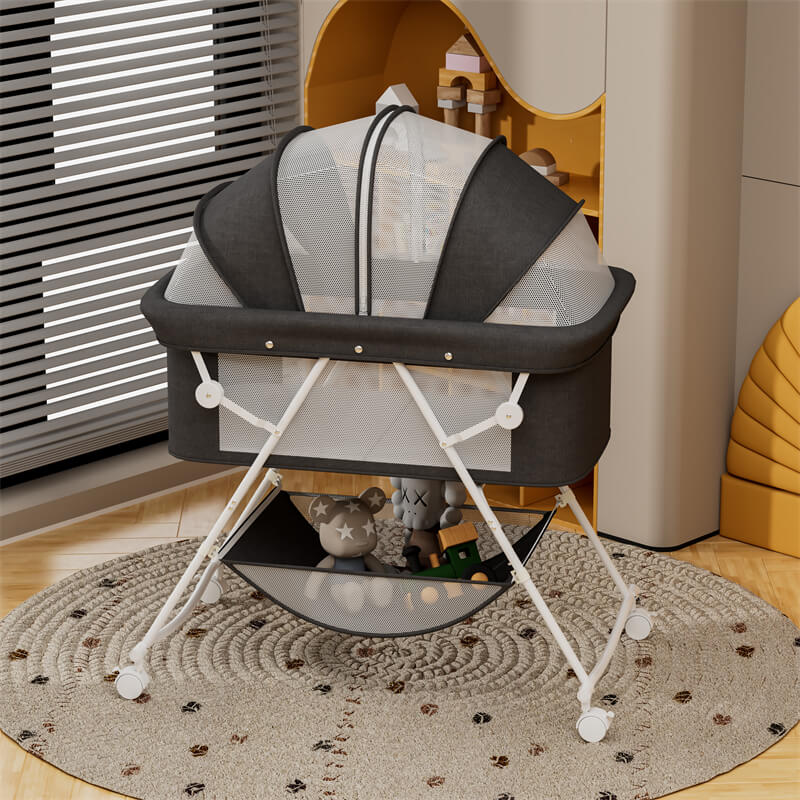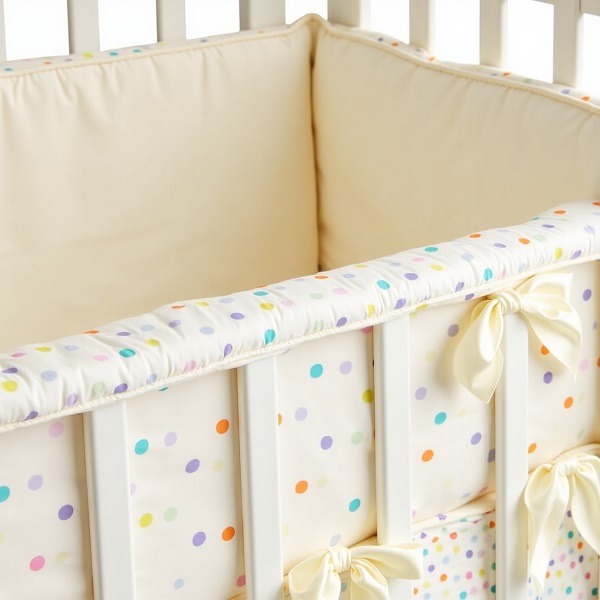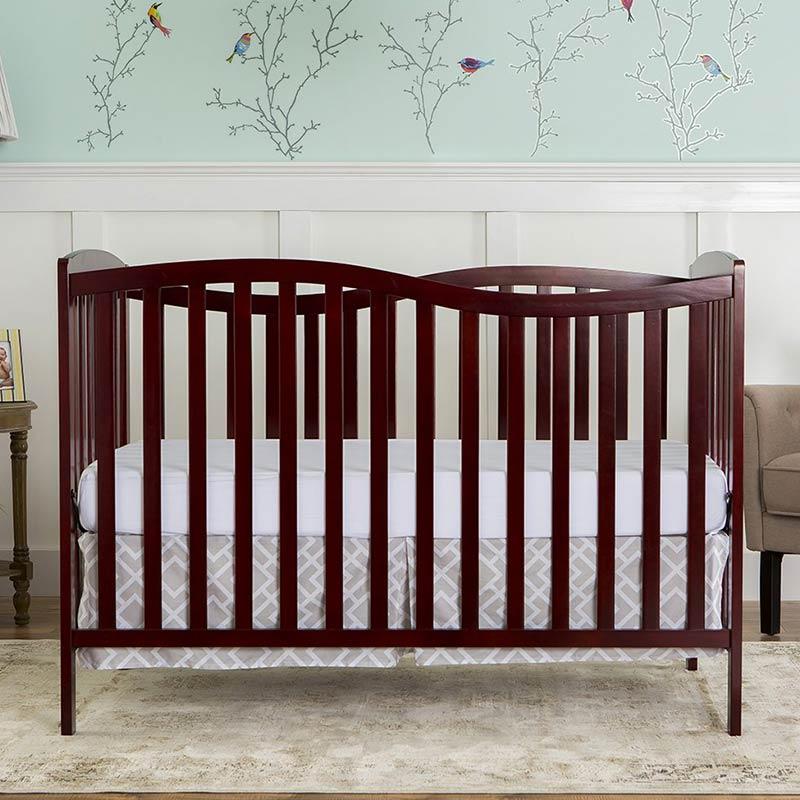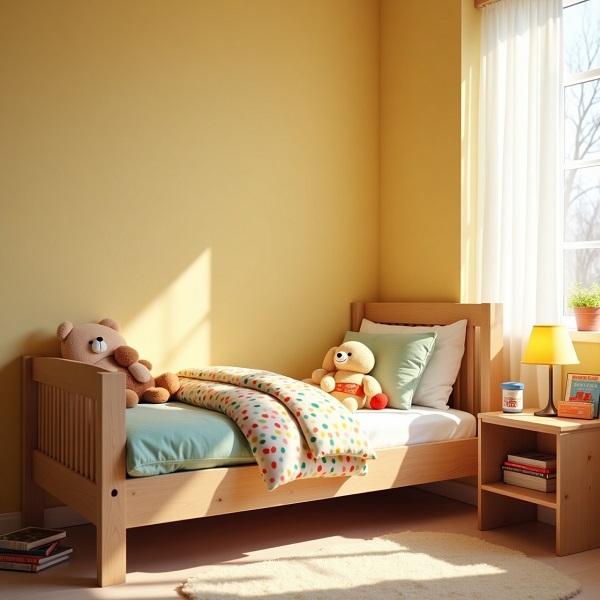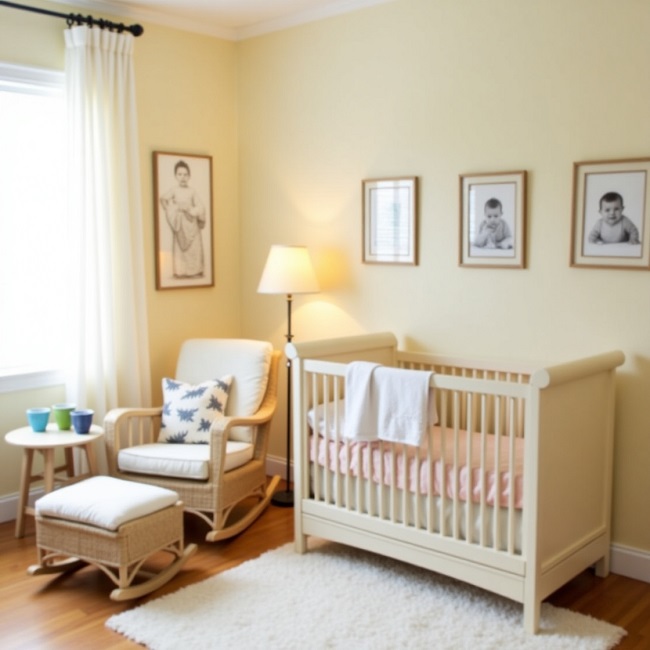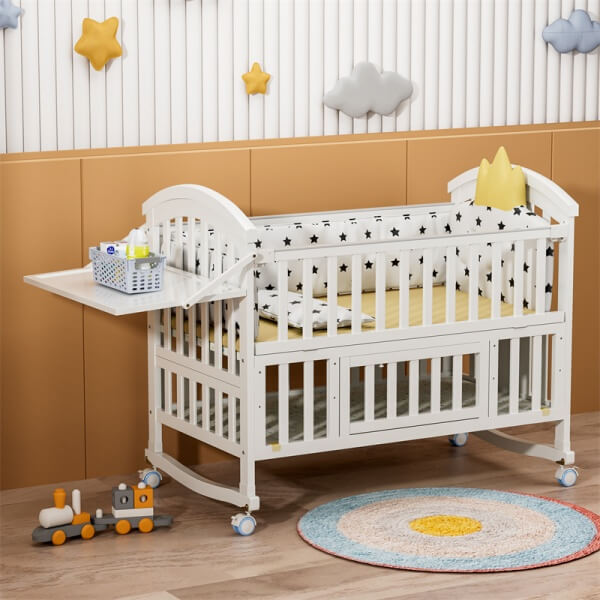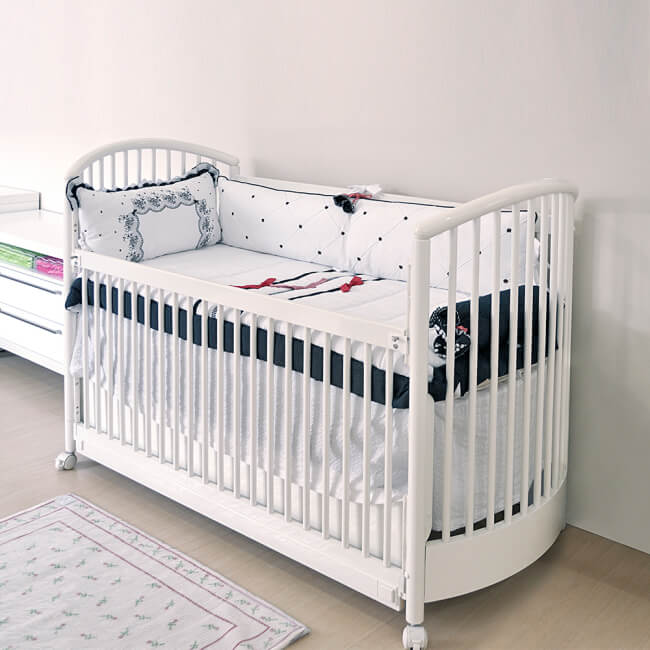Welcoming a newborn into the family brings about an exhilarating and joyous experience. As parents, one of our top priorities is ensuring our little ones are safe, comfortable, and secure while they sleep. This is where a bedside bassinet comes in. In this complete guide, we will explore everything you need to know about bedside bassinets, from their safety features to how to choose the best one for your baby.
What Is a Bedside Bassinet Used For?
A bedside bassinet is a compact, portable bed specifically designed for newborns and infants, typically used during the first few months of a baby’s life. Its primary function is to allow the baby to sleep right next to their parents’ bed.
Placing the baby in a bedside bassinet allows for easy access during nighttime feedings, diaper changes, and comforting. Parents can attend to their baby’s needs quickly without having to leave their own bed or walk to a separate nursery room.
Especially in the early months when sleep is fragmented, having the baby nearby in a bedside bassinet can significantly reduce disruption to the parents’ sleep. This convenience can be a game-changer for tired parents, especially during those early sleep-deprived days.
Is Bedside Bassinets Safe?
Safety is always a top concern when it comes to our little ones, and rightfully so. Newborn bedside bassinets, like other baby furniture, are generally considered safe for infants. However, to ensure maximum safety, it’s crucial to invest in products of guaranteed quality and familiarize yourself with proper usage guidelines. By carefully selecting and using these cradle beds, you can provide a secure sleeping environment for your baby.
How to Get a Newborn to Sleep in the Bassinet?
Getting a newborn to sleep in a rocker cradle can sometimes be a challenge. Here are some tips to help ease the transition and encourage your baby to sleep comfortably in their bassinet:
Create a soothing environment: Make sure the infant bedside bassinet is in a quiet and dimly lit area of the room. Use a white noise machine or a lullaby to create a soothing atmosphere that mimics the sounds of the womb.
Swaddle your baby: Swaddling can help babies feel secure and calm. Use a lightweight swaddle or a sleep sack to keep your baby snug and cozy in the bassinet.
Establish a bedtime routine: Develop a consistent bedtime routine that includes activities such as a warm bath, gentle massage, and reading a bedtime story. This routine will signal to your baby that it’s time to sleep.
Monitor Awake Times: Newborns have short awake periods, and overtiredness can make it harder for them to settle down to sleep. Keep an eye on your baby’s awake times and aim to put them down for naps or bedtime before they become overly tired.
Try Different Positions: Some babies may prefer slightly inclined positions or different sleeping surfaces, such as a bassinet with a firm mattress or a co-sleeper attached to the side of the bed. Experiment with different setups to see what your baby finds most comfortable.
Stay Consistent with Day and Nighttime Sleep: Help your baby distinguish between daytime naps and nighttime sleep by keeping the environment darker and quieter at night and engaging with them more during the day.
Where to Put Bedside Bassinet in Bedroom?
The bedside cradle is most commonly placed right next to the parent’s bed, typically on the side closest to the mother if she’s breastfeeding, or on the side that offers easier access for both parents. This positioning facilitates quick and easy access to the baby during nighttime feedings, diaper changes, or soothing.
If placing the baby cradle bed next to the bed isn’t feasible due to space constraints or other considerations, positioning it against a wall near the parents’ bed can offer similar benefits. This location still provides easy access to the baby while minimizing the risk of tripping or stumbling during the night.
During the day, try moving the cradle near a window or source of natural light can provide a soothing environment for daytime naps and create a sense of connection to the outside world for the baby. However, it’s important to ensure that direct sunlight doesn’t interfere with the baby’s sleep or cause discomfort.
Ensure that the infant rocking cradle is placed away from any potential hazards, such as curtains, blinds, or cords. Keep it at a safe distance from heaters, lamps, or any other objects that could pose a risk of overheating or falling.
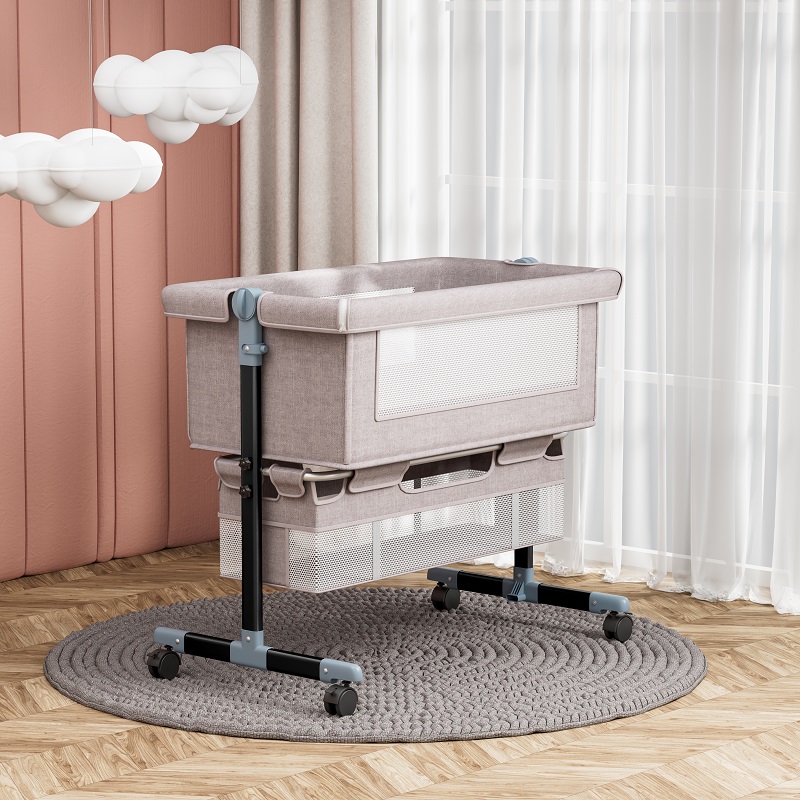
When to Move Baby out of Bassinet?
As your baby grows and develops, there will come a time when they outgrow their bedside sleeper. Most bassinets have weight and size limitations specified by the manufacturer. Once your baby exceeds these limits, it’s time to transition them to a larger sleeping space. At this time, you may need a baby crib or toddler bed.
If your baby has started to roll over independently, it’s a sign that they may need more space and freedom of movement. A baby cot or a bed provides a safer sleeping environment for a rolling baby.
While there is no set age for moving a baby out of a rocker cradle, most babies are ready for the transition between 4 to 6 months of age.
What Is the Difference Between a Co-Sleeper and a Bassinet?
Bassinet Attachment to the Parent’s Bed:
- A co-sleeper is specifically designed to attach securely to the side of the parent’s bed, allowing the baby to sleep in their own space while still being within arm’s reach of the parent.
- A bassinet is a standalone sleep surface that can be placed next to the parent’s bed or in another room. While bassinets can be positioned close to the bed for convenience, they are not typically designed to attach directly to the parent’s bed.
Design and Size:
- Bedside sleepers often have one side that lowers or folds down, creating a secure barrier between the parent’s bed and the co-sleeper.
- Bassinets come in various designs, but they are generally smaller and more compact than co-sleepers. They typically have higher sides to provide a secure sleeping environment for the baby.
Portability:
- Bassinets are usually lightweight and portable, making them easy to move from room to room as needed. This portability can be convenient for parents who want their baby to sleep nearby during the day or while traveling.
- Co-sleepers are designed to stay attached to the parent’s bed, so they are not as easily portable as standalone bassinets.
Longevity:
- Co-sleepers are often designed to be used specifically during the newborn and early infant stages when frequent nighttime feedings are common. Some co-sleepers may have weight or age limits, and they are typically outgrown sooner than bassinets.
- Bassinets may offer more versatility in terms of their lifespan, as some models can be used for longer periods or converted into other useful items such as a changing table or toy storage.
Guide to the Safe Use of a Bedside Bassinet
Follow assembly instructions: Double-check that all parts are securely attached, and there are no loose screws or pieces that could pose a choking hazard to your baby.
Keep the bassinet clean: Regularly clean the bassinet, including the mattress, with mild soap and water. This helps maintain a hygienic sleeping environment for your baby.
Avoid overcrowding: Do not place stuffed animals, pillows, or excessive blankets in the bassinet. These items can increase the risk of suffocation or overheating.
Supervision: Always supervise your baby when they are in the bassinet, especially during sleep. Keep an eye out for any signs of discomfort, distress, or breathing difficulties.
Check for recalls: Stay updated on any recalls or safety notices related to your bassinet. Register your bassinet with the manufacturer to receive notifications in case of any safety concerns.
What Functions of Bedside Bassinet Are Available?
Adjustable Height
Many bedside bassinets offer adjustable height settings, allowing you to match the bassinet’s height to your bed.
Mesh Sides
Bassinets with mesh sides provide optimal airflow, promoting ventilation and reducing the risk of overheating for your baby. Mesh sides also allow you to see your baby clearly and provide a sense of openness and connectivity.
Swivel or Retractable Walls
Some bedside bassinets feature swivel or retractable walls that can be easily moved or lowered to bring your baby closer to you. This design enables seamless interaction with your baby without the need to get out of bed completely.
Storage Pockets
Built-in storage pockets or compartments are convenient for storing essentials such as diapers, wipes, pacifiers, or baby care products within easy reach.
Rocking or Gliding Motion
Bassinets with rocking or gliding motion capabilities can help soothe your baby to sleep by mimicking the gentle swaying motion they experienced in the womb. This feature can be particularly beneficial for calming fussy or restless babies.
Nightlight and Sound Machine
Some bedside bassinets come equipped with built-in nightlights and sound machines, offering soft, comforting illumination and soothing sounds to help lull your baby to sleep.
Vibration Mode
Certain bassinets offer a vibration mode that provides gentle, rhythmic vibrations to help calm and relax your baby. This feature can be especially effective for soothing infants who have difficulty settling down.
Portability
Many bedside bassinets are designed to be lightweight and portable, making them easy to move from room to room or for travel.
Convertible Design
Some bassinets have a convertible design that allows them to transform into a standalone crib or playard as your baby grows.
Adjustable Incline
Bassinets with an adjustable incline feature allow you to elevate your baby’s head slightly, which can be beneficial for infants with reflux or congestion issues.
Built-in Diaper Changing Station
Bassinets with a built-in diaper changing station provide a convenient and hygienic space for diaper changes, eliminating the need to move your baby to a separate changing table during nighttime routines.
Safety Features
Modern bedside bassinets prioritize safety with features such as sturdy construction, locking mechanisms to secure the bassinet to the bed, and adherence to safety standards and regulations.
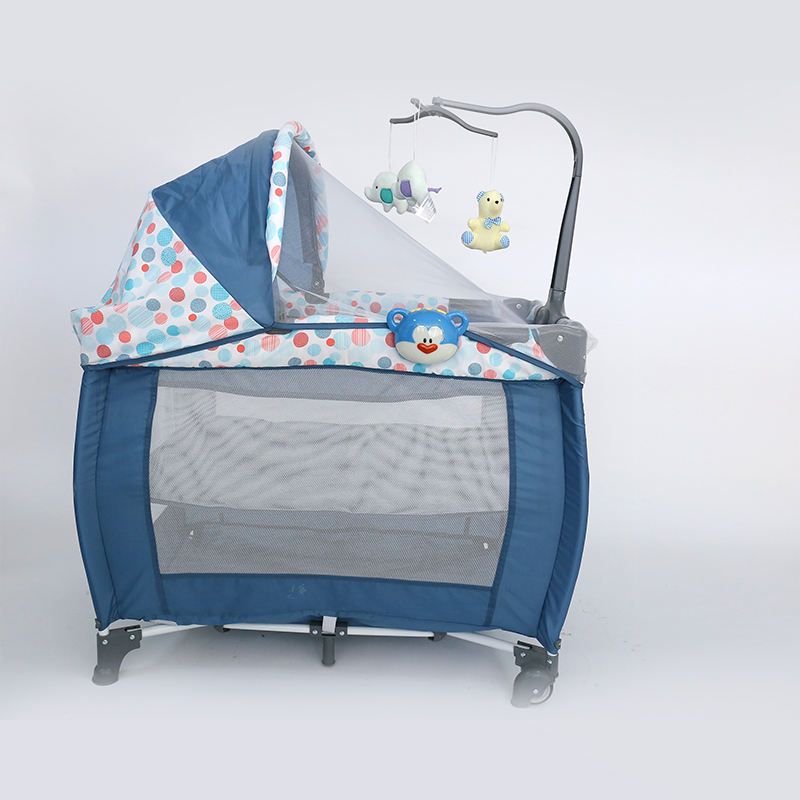
Considerations for Selecting a Bedside Bassinet:
Ensure that the cradles for babies meet current safety standards, such as ASTM (American Society for Testing and Materials) or CPSC (Consumer Product Safety Commission) regulations.
Look for a wooden rocking cradle with adjustable height settings that allow you to match the bassinet’s height to your bed.
If you plan to move the bassinet frequently between rooms or travel with it, consider its portability. Look for lightweight bassinets with wheels or carrying handles for easy transportation.
Set a budget for your bassinet purchase and compare prices across different models to find one that offers the best value for your money. Keep in mind that higher-priced bassinets may offer more features or higher-quality materials, but there are also budget-friendly options available.
FAQ About Bedside Bassinet
Q: Can a bedside bassinet be used for co-sleeping?
A: Bedside bassinets are designed to be used as a separate sleeping space for your baby while still keeping them close to you. They are not intended for co-sleeping, where the baby shares the same bed as the parents.
Q: Can I use a bassinet as a crib?
A: Bassinets are designed for the first few months of a baby’s life when they are smaller and less mobile. Once your baby outgrows the mini bassinet or starts rolling over independently, it’s time to transition them to a crib or a larger bed.
Q: How often should I clean the bassinet?
A: It’s important to keep the cradle bed clean to maintain a hygienic sleeping environment for your baby. Clean the bassinet, including the mattress, regularly using mild soap and water.
Q: Can I move the bassinet from room to room?
A: Some bassinets are designed to be portable, with wheels or a lightweight design that allows for easy movement between rooms. However, always ensure that the bassinet is stable and secure before placing your baby in it.
Q: Can I use a bassinet for twins?
A: You can choose to purchase a specialized twin bassinet. Double bassinets are designed to accommodate two infants in a single unit. These bassinets typically feature two separate sleeping areas with a divider in the middle to provide individual space for each twin. Double bassinets are convenient for parents who prefer to have both twins in the same sleep space.
Q: Can I use a bedside bassinet if I have pets in the household?
A: If you have pets in the household, it’s essential to take precautions to ensure the safety of your baby. Consider using a bassinet with a protective cover or mesh sides to prevent pets from accessing the baby’s sleep space. Additionally, always supervise interactions between pets and the baby.
In conclusion, a safe bassinet can be a valuable addition to your baby’s sleeping routine, providing convenience, safety, and comfort for both the baby and parents. By understanding its purpose, following safety guidelines, and considering the different features available, you can choose the best bedside bassinet that meets your needs and ensures a restful and peaceful sleep for your little one.
Recommended Related Articles:

